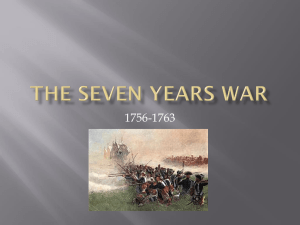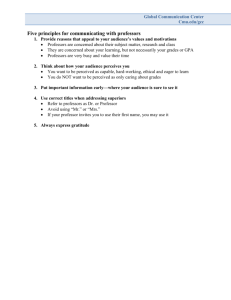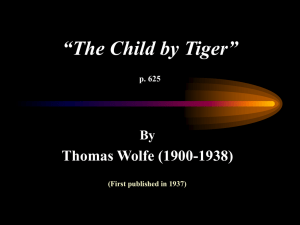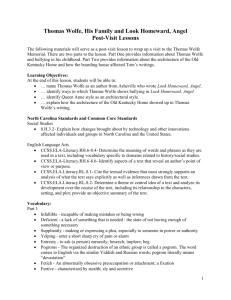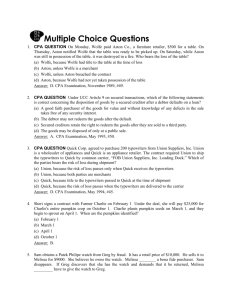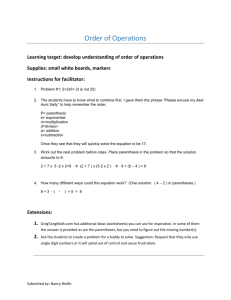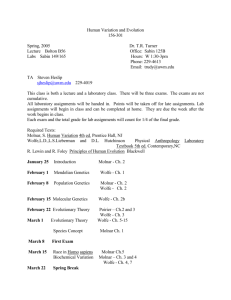the PDF.
advertisement
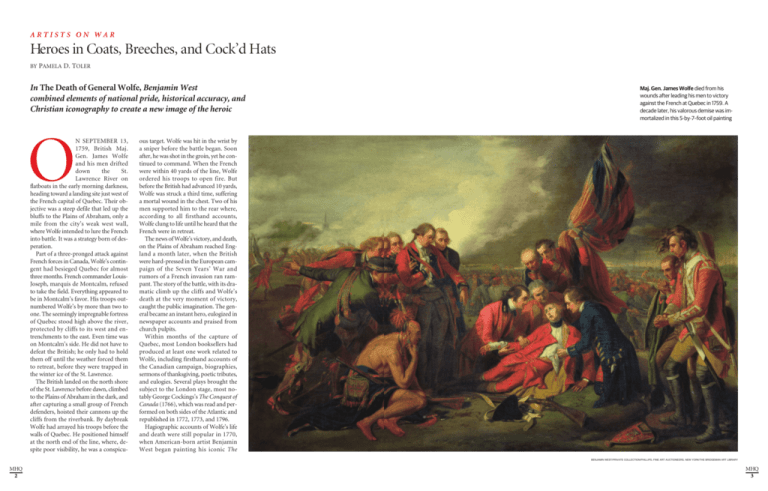
ARTISTS ON WAR Heroes in Coats, Breeches, and Cock’d Hats BY PAMELA D. TOLER In The Death of General Wolfe, Benjamin West combined elements of national pride, historical accuracy, and Christian iconography to create a new image of the heroic O N SEPTEMBER 13, 1759, British Maj. Gen. James Wolfe and his men drifted down the St. Lawrence River on flatboats in the early morning darkness, heading toward a landing site just west of the French capital of Quebec. Their objective was a steep defile that led up the bluffs to the Plains of Abraham, only a mile from the city’s weak west wall, where Wolfe intended to lure the French into battle. It was a strategy born of desperation. Part of a three-pronged attack against French forces in Canada, Wolfe’s contingent had besieged Quebec for almost three months. French commander LouisJoseph, marquis de Montcalm, refused to take the field. Everything appeared to be in Montcalm’s favor. His troops outnumbered Wolfe’s by more than two to one. The seemingly impregnable fortress of Quebec stood high above the river, protected by cliffs to its west and entrenchments to the east. Even time was on Montcalm’s side. He did not have to defeat the British; he only had to hold them off until the weather forced them to retreat, before they were trapped in the winter ice of the St. Lawrence. The British landed on the north shore of the St. Lawrence before dawn, climbed to the Plains of Abraham in the dark, and after capturing a small group of French defenders, hoisted their cannons up the cliffs from the riverbank. By daybreak Wolfe had arrayed his troops before the walls of Quebec. He positioned himself at the north end of the line, where, despite poor visibility, he was a conspicu- Maj. Gen. James Wolfe died from his wounds after leading his men to victory against the French at Quebec in 1759. A decade later, his valorous demise was immortalized in this 5-by-7–foot oil painting ous target. Wolfe was hit in the wrist by a sniper before the battle began. Soon after, he was shot in the groin, yet he continued to command. When the French were within 40 yards of the line, Wolfe ordered his troops to open fire. But before the British had advanced 10 yards, Wolfe was struck a third time, suffering a mortal wound in the chest. Two of his men supported him to the rear where, according to all firsthand accounts, Wolfe clung to life until he heard that the French were in retreat. The news of Wolfe’s victory, and death, on the Plains of Abraham reached England a month later, when the British were hard-pressed in the European campaign of the Seven Years’ War and rumors of a French invasion ran rampant. The story of the battle, with its dramatic climb up the cliffs and Wolfe’s death at the very moment of victory, caught the public imagination. The general became an instant hero, eulogized in newspaper accounts and praised from church pulpits. Within months of the capture of Quebec, most London booksellers had produced at least one work related to Wolfe, including firsthand accounts of the Canadian campaign, biographies, sermons of thanksgiving, poetic tributes, and eulogies. Several plays brought the subject to the London stage, most notably George Cockings’s The Conquest of Canada (1766), which was read and performed on both sides of the Atlantic and republished in 1772, 1773, and 1796. Hagiographic accounts of Wolfe’s life and death were still popular in 1770, when American-born artist Benjamin West began painting his iconic The BENJAMIN WEST/PRIVATE COLLECTION/PHILLIPS, FINE ART AUCTIONEERS, NEW YORK/THE BRIDGEMAN ART LIBRARY MHQ 2 MHQ 3 ARTISTS ON WAR Death of General Wolfe. From a modern perspective, the topic seems like a natural choice for a historical painting of the period, which used great men in action as a way of presenting moral truths. In fact, the subject was politically sensitive. Wolfe’s victory at Quebec had led to the end of the French and Indian War (as the Seven Years’ War was termed in North America) and the expansion of British control over much of French America. Indirectly, it had also led to tensions between Britain and its American colonies. As soon as the European powers signed the Peace of Paris in 1763, Parliament declared that the colonies must help defray the cost of the American wars and began to assess the duties and taxes that would ultimately lead to the American Revolution. All duties except the tea tax were subsequently repealed in 1770, but relations between Britain and America remained in a constant state of crisis. scene of action,” and to eschew the “vulgar and strict historical truth” in favor of the greater moral truth. On rare occasions when a painter decided that a contemporary event offered a theme of timeless significance, he was expected to portray it using the iconography of classical Greece and Rome. West chose not only to paint a contemporary event but also to present its actors in contemporary clothing. West’s Death of General Wolfe generated controversy even before it was exhibited. According to Joseph Galt’s 1816 biography of the artist, George III refused to buy the painting because he thought it was “ridiculous to exhibit heroes in coats, breeches, and cock’d hats.” By West’s own account, Sir Joshua Reynolds urged him “to adopt the classical costume of antiquity, as much more becoming the inherent greatness of my subject than the modern garb of war.” West reportedly replied: W EST APPROACHED the subject of Wolfe’s death from the perspectives of both loyal Briton and proud American. Born in Pennsylvania in 1738, West was 17 when border skirmishes between the British and French colonies turned into fullscale war. His older brother served with the Pennsylvania forces for six years, and West himself drilled with the local militia. As a student in Philadelphia, he followed newspaper accounts of the progress of Wolfe’s army and joined in the public display of joy and sorrow that greeted the news from Quebec. West spent three years studying art in Italy before he arrived in London in 1763, shortly after the Peace of Paris reconfirmed Britain’s control of Canada. During that time, he immersed himself in the theories of the new neoclassical movement, which had just begun to make its way to England. Neoclassical painting, informed by the discovery of Pompeii and Herculaneum and repudiating the frivolous excesses of baroque art, used forms derived from Greek and Eschewing the fashion of the times, West painted Wolfe and his men in a contemporary, realistic vein rather than employ “timeless” classical Greek and Roman iconography. Roman art to create works of moral seriousness. Aided by his command of the most up-to-date artistic style, the young American rapidly acquired a reputation for historical paintings based on Greek and Roman sources—as well as the patronage of important collectors, including King George III. The Death of General Wolfe was a conscious rebellion against the conventions of historical painting then prevalent in England. Valued for its ability to portray moral truth through “noble subjects” drawn from classical and religious history, historical painting stood at the top of a hierarchy of artistic genres. Artists were warned to avoid what Sir Joshua Reynolds, the first president of the Royal Academy, later described as the “minute peculiarities of the dress, furniture or The event intended to be commemorated took place on the 13th of September, 1758 [sic] in a region of the world unknown to the Greeks and Romans, and at a period of time when no such nations, nor heroes in their costumes, any longer existed. The subject I have to represent is the conquest of a great province of America by the British troops. It is a topic that history will proudly record, and the same truth that guides the pen of the historian should govern the pencil of the audience. I consider myself as undertaking to tell this great event to the eye of the world…. I want to mark the date, the place and the parties engaged in the event; and if I am not able to dispose of the circumstances in a picturesque manner, no academical distribution of Greek or Roman costume will enable me to do justice to the subject. At a time when the relationship between Britain and its American colonies was strained, West was determined to portray this critical event in its proper American setting. Yet West’s painting skillfully combines realistic detail with the accepted conventions of the historical genre. His figures wear historically accurate uni- The Native American warrior in Wolfe is said to represent the American wilderness. forms, and he certainly marks “the date, the place and the parties engaged in the event” through careful use of local color. But his compositions and his use of expressions and attitudes are very much in the grand style of historical painting. T HE PAINTING’S background gives the viewer a panoramic representation of the chronology of the Battle of Quebec, moving from right to left and deeper into the canvas with Wolfe’s troops as they scale the cliffs to the Plains of Abraham, drag their cannons into position, fire the first volley, and pursue the retreating French. The narrative culminates in the wounded general’s death in the arms of his officers. All lines in the painting point toward Wolfe, who occupies the center of the foreground in a composition borrowed from baroque representations of the Lamentation of Christ. Despite West’s assertion that painters should be held to the same standard as historians, he makes no attempt to recreate the historical facts of Wolfe’s death. Only a few officers were with Wolfe when he died, and he had no Native Americans under his command. Nonetheless, West shows the general surrounded by 12 British soldiers and a Native American warrior. Only half of the officers can be identified, several of whom were not at Quebec. As a group, the soldiers are officer-apostles who witness Wolfe’s martyrdom. As individuals, each officer represents some aspect of the Canadian campaign, in accordance with the neoclassical convention of using human figures to convey the moral message of a painting. The Native American figure carries the heaviest symbolic load: Native Americans modeled after classical sculpture had long been synonymous in West’s artistic vocabulary with the American wilderness itself. The true revolution in West’s Death of General Wolfe is not his choice to treat the event as what one critic scornfully called a “coat and waistcoat subject,” but his construction of Wolfe as a modern hero linked to a specific date and place rather than as a timeless abstraction. Whatever reservations Reynolds and the Royal Academy might have had about West’s artistic revolution, his Death of General Wolfe was instantly popular. Following its exhibition at the newly established Royal Academy in 1771, Lord Richard Grosvenor purchased the painting for the extraordinary price of £400 (more than $58,000 today). Three influential collectors, including George III, who evidently had changed his mind about the work, asked him to paint copies. William Woollett’s popular engraving of the painting, published by John Boydell in 1776, sold thousands of copies and its image was reproduced on everyday objects such as needle cases and meat plates. By the end of the century, West’s painting was so well known that political cartoonists parodied its composition. In fact, despite its historical inaccuracies, it remains the image most often used to illustrate accounts of the Battle of Quebec. MHQ PHOTOS: DETAILS FROM BENJAMIN WEST/PRIVATE COLLECTION/PHILLIPS, FINE ART AUCTIONEERS, NEW YORK/THE BRIDGEMAN ART LIBRARY MHQ 4 MHQ 5
